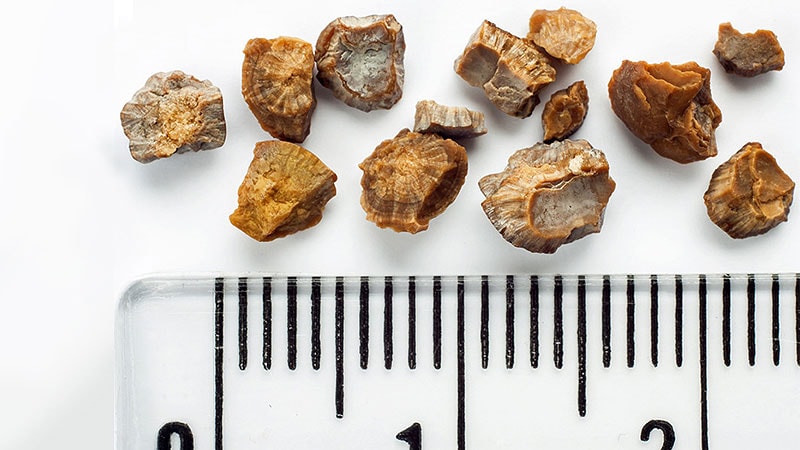An evolving legal landscape surrounding medication abortion has left physicians with as many questions as patients. A panel of clinicians at the American College of Physicians' 2024 Internal Medicine meeting offered guidance on how to help patients who choose medication abortion, which is available to women until 10 weeks of gestation.

Approved in 2000, abortion pills have become the most common method for terminating pregnancy in the United States, accounting for 63% of all abortions in 2023. The US Supreme Court is reviewing access to medication abortions, with a decision expected within months.
According to the Guttmacher Institute, 29 states as of February restrict access to medication abortion, either by limiting or banning the use of the drugs or by curtailing who can prescribe them and under what circumstances.
First, Determine Gestational Age
Cynthia Chuang, MD, MSc, an internist and professor of medicine at Penn State College of Medicine in Hershey, Pennsylvania, said in most cases, a woman can pinpoint the date of the first day of her last menstrual period, and the physician can confirm gestational age is 70 days or less. An ultrasound should be performed if the date of the last period is uncertain, she said, or if ectopic pregnancy is suspected, periods are irregular, or ultrasound is legally required in the state.
Women are not eligible for abortion pills if they have a bleeding or clotting disorder, have an intrauterine device, have adrenal insufficiency or chronic steroid use, or have porphyria or hemoglobin levels < 9 g/dL, she said.
"If the person has a known hemoglobin of less than 9, we would suggest that person have a procedural abortion," Chuang said.
Components of Medication
Patients first receive 200 grams of oral mifepristone, which separates the pregnancy from the uterine wall. "Typically, people don't experience side effects from the mifepristone alone," Chaung said.
In the next 48 hours, the patient takes 800 mcg of misoprostol, either vaginally or buccally. "Patients can expect heavy cramping and bleeding 1-2 days after taking misoprostol," she said. The bleeding should gradually subside over the following week or 2, she said. If the gestational age is 9 weeks or more, a second dose of misoprostol can be administered 3-6 hours after the first dose to improve efficacy.
If mifepristone is not available, misoprostol can be used alone in three doses spaced 3 hours apart, Chuang said.
The failure rate for mifepristone plus misoprostol has been calculated at 2% if the gestational age is less than 7 weeks. For misoprostol alone, the failure rate varies by the study, depending on gestational age and population analyzed, Chuang said. A 2023 meta-analysis in Contraception put the failure rate at 11%.
When to Call the Clinician
Chuang said clinicians should instruct women who have taken abortion pills to call the clinic if they are soaking through two sanitary pads an hour for more than 1 hour, if there is little to no bleeding, or if they think the medication isn't working after taking the full regimen.
Mindy Sobota, MD, MS, an internist and associate professor of medicine at the Warren Alpert Medical School of Brown University in Providence, Rhode Island, recommended a continuing medical education site for evidence-based guidance on how best to talk with women about medication abortions.
She also recommended physicians and patients consult the Plan C website for guidance on telehealth services and price information on receiving abortion pills by mail in every state. "It's a very reliable and safe clearing house," Sobota said.
Internists should let patients know that whatever their choices are around pregnancy, they are open to discussing those choices and helping them through the process, Sobota said, adding that she makes those statements in annual visits.
Alexandra Bachorik, MD, EdM, director of education in the Women's Health Unit and assistant professor of medicine at Boston University Chobanian & Avedisian School of Medicine, Boston, said patients in restrictive states who need financial help related to obtaining abortion services in a less restricted state can visit the National Network of Abortion Funds, which can help people with travel or housing expenses.
Facilitating access to a clinic in a less restrictive state may be helpful to people approaching a gestational age limit, she said.
Adelaide McClintock, MD, an internist and assistant professor of general internal medicine at the University of Washington School of Medicine in Seattle, noted that even clinicians who cannot legally prescribe abortion pills can support their patients by providing resources and counseling on options before, during, and after pregnancy. Those who live in restrictive states also can provide support to women who have traveled to less restrictive states for an abortion if they have postabortion complications, she said.
She recommended the Reproductive Health Access Project website for a comprehensive guide for evidence-based care and counseling patients about all choices in reproductive healthcare.
Panelists urged clinicians to get familiar with abortion-access resources and keep them at their fingertips in practice. Patient requests for the services are common, she noted, as "one in four women will have an abortion by the age of 45."
Chuang, McClintock, Sobota, and Bachorik reported no relevant financial conflicts of interest.
Marcia Frellick is a freelance journalist based in Chicago. She has previously written for the Chicago Tribune, Science News, Northwestern magazine, and Nurse.com and was an editor at the Chicago Sun-Times, The Cincinnati Enquirer, and St. Cloud Times. Follow her on X: @MLfrellick.

.webp) 1 week ago
11
1 week ago
11
























 English (US)
English (US)